From Aldous Huxley, to Jimi Hendrix, to Ann Shulgin, they are all progeny of 19-something-something.
The Lineage of Psychedelic Culture
This makes sense to an extent; LSD was not synthesized until 1948 and magic mushrooms were not popularized in the Western world until the 1950s. But, the psychedelic culture we take for granted today did not just spring fully-formed from nothing. It had numerous inspirations in its lineage, based on different cultures, traditions, and art forms from all across the world.
Celebrating William Blake
One of these inspirations that looms heavy over psychedelic culture, inspiring the aesthetic of romanticism in the 1960s and ‘70s ‘Summer of Love’ era, is the British artist and poet William Blake. Despite not being recognized during his lifetime, even dismissed as a ‘madman’, his influence cannot be overstated — and not just in psychedelic culture.
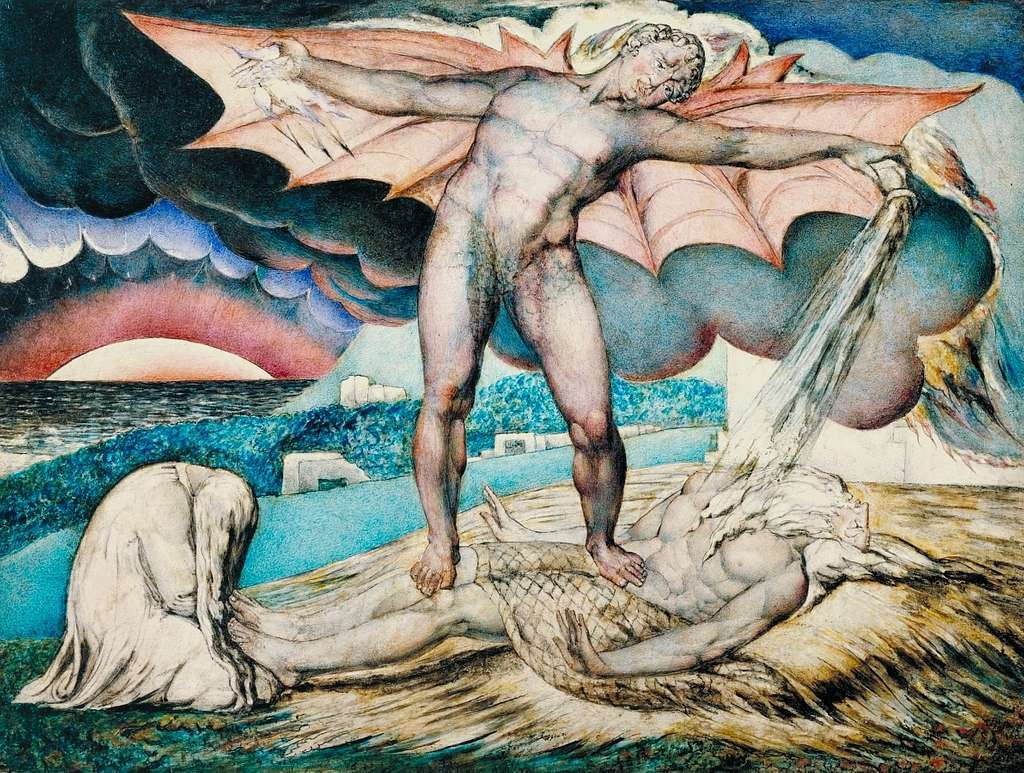
As today would be 265th his birthday we’ve decided to dive into his considerable legacy. We’ll be focusing on his psychedelic influence mainly however, as Blake was a very busy bee. Not only did he coin the term ‘The Doors of Perception’ (!) He was also a writer, poet, painter, printmaker, mystic, and radical, with staunchly progressive views for the Victorian era in which he lived. So, for today we”ll narrow it down…
Visited By Angels?
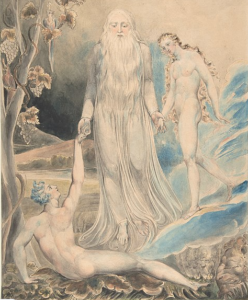
Bringing Eve to Adam
(via Wikipedia Commons)
William Blake was born in 1757 in Soho, London, the third of seven children. He left school at the age of 10, enrolling in drawing school, having shown an early aptitude. Blake claimed to have seen visions since childhood. The first apparently being at age four when he “…saw God put his head to the window”. At eight or ten years of age he saw “a tree filled with angels, bright angelic wings bespangling every bough like stars.” on Peckham Rye, south London.
Despite generally refuting traditional religion, Blake would continue to see these visions throughout his life, inspiring his art and writings. He even claimed that Archangels were personally instructing him to create his works.
In 1782 Blake married Catherine Boucher. She would become his main champion and supporter throughout his life. Blake taught her to read and write, as well as printmaking techniques, and she became invaluable both as Blake’s creative assistant, and his emotional support through numerous ups and downs.
He Only Received Recognition After Death
Blake died in London in 1827 after a rich life, despite not receiving the recognition he craved during his career. It was a whole generation after his death that his visionary talent began to be more widely recognised. His most famous works today are his illuminated books ‘Songs of Innocence and Experience’ (edited 1794), The Marriage of Heaven and Hell (1793), Visions of the Daughters of Albion (edited 1793), The Book of Thel (written 1788–1790, edited 1789–1793) and Jerusalem: The Emanation of the Giant Albion (worked on between 1804 and 1827).
It is from the pages of The Marriage of Heaven and Hell that Aldous Huxley would take the name of his now iconic 1954 psychedelic text The Doors of Perception.
“If the doors of perception were cleansed every thing would appear to man as it is, Infinite. For man has closed himself up, till he sees all things thro’ narrow chinks of his cavern.”
— William Blake, The Marriage of Heaven and Hell
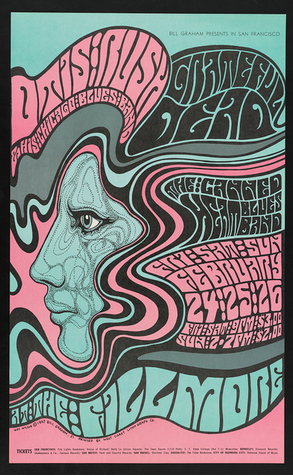
Psychedelic rock band The Doors, a defining sound of the 1960s, took their name as a nod to both Blake and Huxley.
Blake Becomes a Counterculture Icon
During the 1960s Blake’s influence would seep into many aspects of the hippie counterculture. From Allen Ginsberg reading his poetry at anti-Vietnam war protests, to his idiosyncratic visual style inspiring the iconic psychedelic swirls of concert posters, to Timothy Leary aping his aesthetic for his 1970 ‘prison escape letter’, Blake’s vision was all around.
To name but few more of the people he inspired, we could throw in Sigmund Freud, Carl Jung, The Rolling Stones, The Beatles, Patti Smith, Bob Dylan, Joni Mitchell, Bruce Springsteen, Phillip Pullman and Kae Tempest. Wow! Not bad for a man who was described as ‘mad’ for most of his life.
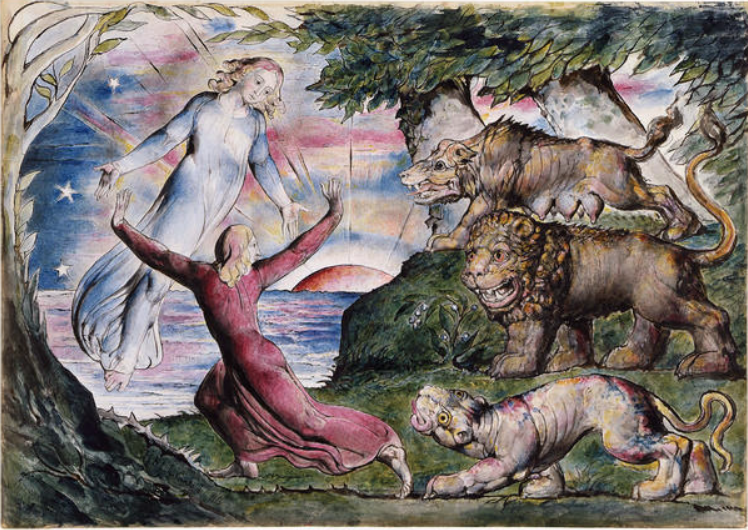
A Few Iconic Works for Psychedelic Minds
Here are just a few of William Blake’s most prized works. Although Blake was never known to have taken any mind-altering substances, his creations chime exceptionally well with the psychedelic ethos. Why not read some of his poetry before a shroom trip, or look at his art during it? Your gaze will be returned by the work of a man who seeimgly was high on his own natural supply. The psychedelic mind of a sober man… 🤯
An Excerpt of a Poem Which Perfectly Describes the Psychedelic Experience:
“To see a World in a Grain of Sand
And a Heaven in a Wild Flower,
Hold Infinity in the palm of your hand
And Eternity in an hour.”
William Blake, Auguries of Innocence
You Ever Feel So Powerful While Tripping That You Measure the Void?
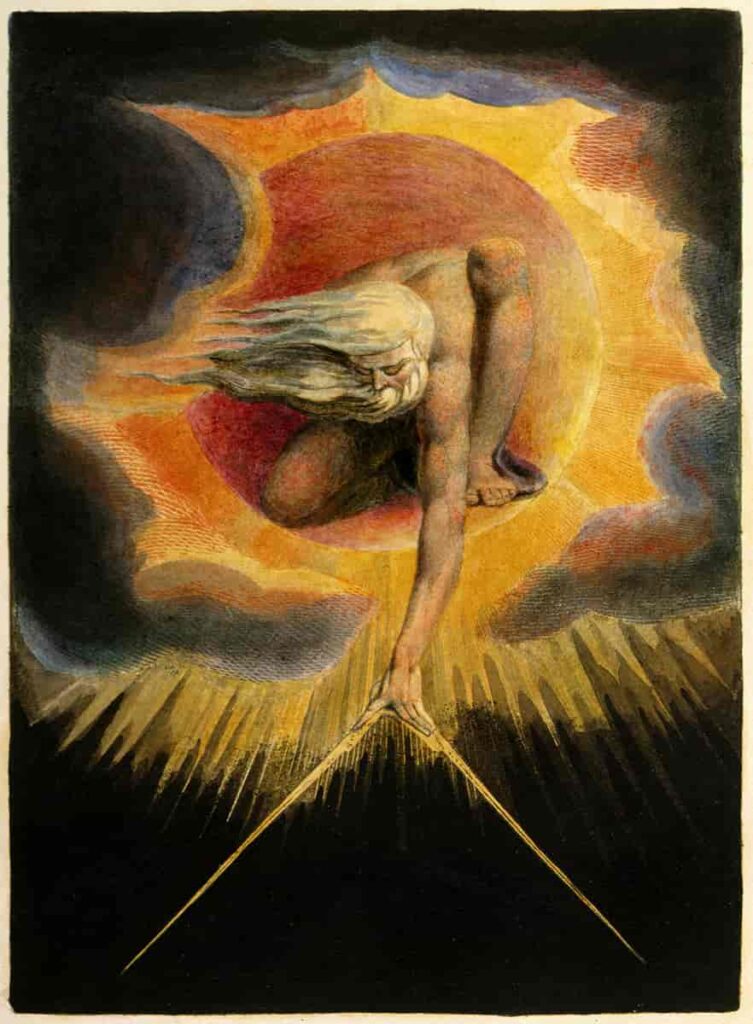
‘A Man is So He Sees’ (i.e. Your Perception of the World Creates the World)
“I feel that a man may be happy in this world, and I know that this world is a world of imagination and vision. I see every thing I paint in this world, but everybody does not see alike… The tree which moves some to tears of joy is in the eyes of others only a green thing which stands in the way… As a man is so he sees.”
A letter from Blake to Dr. Trusler (23 August 1799)
Tyger, Tyger Burning Bright
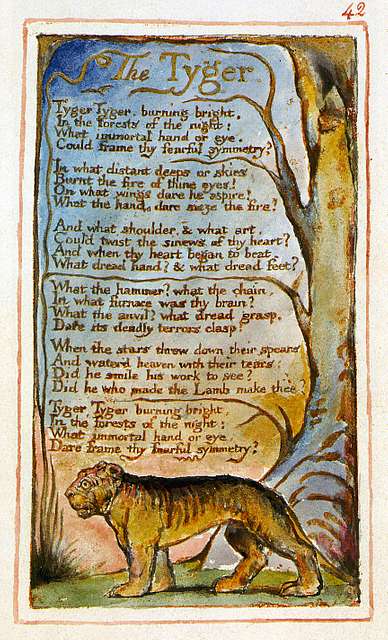
Blake’s exploration of the dark side of creation is one of the most anthologised poems of all time. Use it as a tool to explore your inner demons.
Always Be Open to Change or You’ll Be Covered in Lizards (Maybe)
“The man who never alters his opinion is like standing water, and breeds reptiles of the mind.”
The Marriage of Heaven and Hell
If Woodstock Took Place in 1786
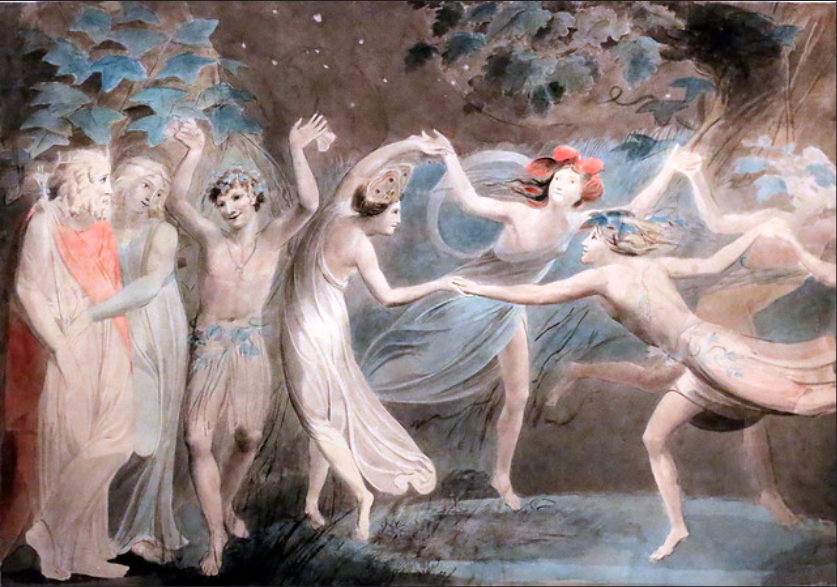
Looks pretty cool, huh?
Happy 265th Birthday Mr. Blake!





